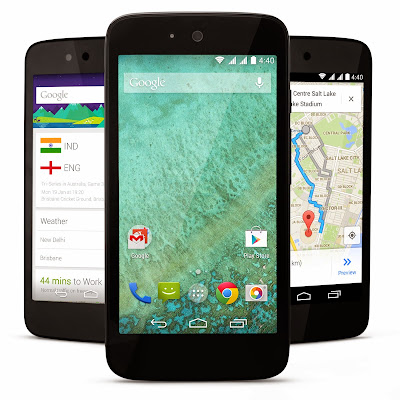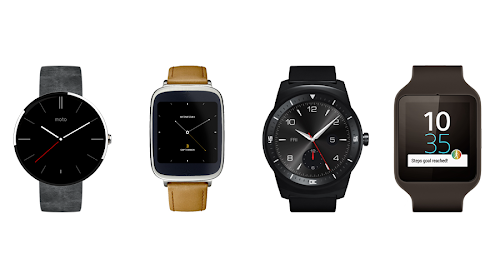If we look at how people are getting online and accessing information today, increasingly it’s through a smartphone. While 1.75 billion people around the world already have a smartphone, the vast majority of the world’s population—over five billion more—do not. That means most people are only able to make simple voice calls, rather than connect with family through a live video chat, use mapping apps to find the closest hospital, or simply search the web. We want to bring these experiences to more people.
That’s where Android One comes in. At I/O, we first talked about this initiative to make high-quality smartphones accessible to as many people as possible. And today we’re introducing the first family of Android One phones in India.
Addressing key barriers—hardware, software and connectivity
There are three big reasons why it’s hard for people in countries such as India, Indonesia or the Philippines to get their hands on a high-quality smartphone. First, is the hardware itself. Even entry-level smartphones still remain out of reach for many (bear in mind that in some of these countries the average monthly income is around $250). Second, many people in these markets do not have access to the latest Android software and popular applications. Finally, even where 3G and 4G networks are available, not enough people have phones that can support data and the plans can be expensive.
Android One aims to help tackle these challenges. By working closely with phone and silicon chip makers to share reference designs and select components, we’re making it easier for our partners to build phones that are not just great to use, but also affordable. They have lots of processing power, so you can get information quickly. They have high-quality front- and rear-facing cameras. And for all those pictures, along with your apps and videos, Android One phones will have expandable storage. We also added features that people in India will find particularly useful, like dual SIM cards, a replaceable battery and built-in FM radio.
To help ensure a consistent experience, Android One devices will receive the latest versions of Android directly from Google. So you’ll get all the latest features, up-to-date security patches, and peace of mind knowing your stuff is always backed up. It also means Android One devices will be some of the first to be updated to the Android L release later this year. For our hardware partners, they’ll be able to create customized experiences and differentiate their devices without having to change the core software.
In an effort to reduce data costs, if you have an Airtel SIM card, you’ll get these software updates for free for the first six months. As part of this same Airtel offer, you’ll also be able to download up to 200MB per month worth of your favorite apps (that’s about 50 apps overall) from Google Play—all without counting toward your mobile data usage.
More to come
This is just the beginning of the Android One journey. The first phones, from our hardware partners Micromax, Karbonn, Spice and chipmaker MediaTek, are available starting today in India from leading retailers starting at Rs 6,399. We’re also excited to welcome more partners to the program, including phone manufacturers Acer, Alcatel Onetouch, ASUS, HTC, Intex, Lava, Lenovo, Panasonic, Xolo, and chipmaker Qualcomm. We expect to see even more high-quality, affordable devices with different screen sizes, colors, hardware configurations and customized software experiences. Finally, we plan to expand the Android One program to Indonesia, the Philippines and South Asia (Bangladesh, Nepal, Pakistan, and Sri Lanka) by the end of the year, with more countries to follow in 2015.
Access for access’s sake is not enough. With Android One, we not only want to help people get online, we want to make sure that when they get there, they can tap into the wealth of information and knowledge the web holds for everyone.


